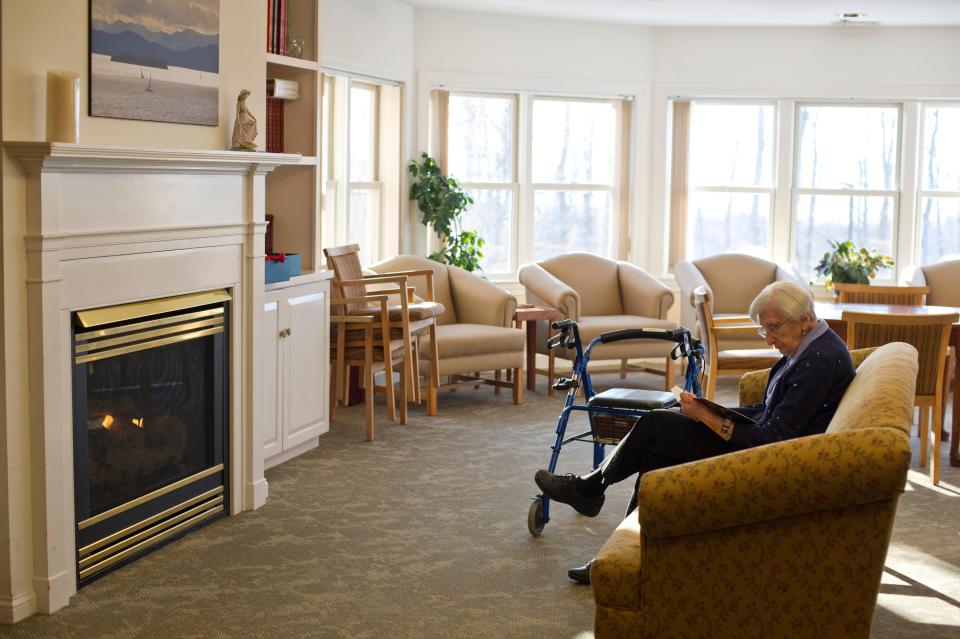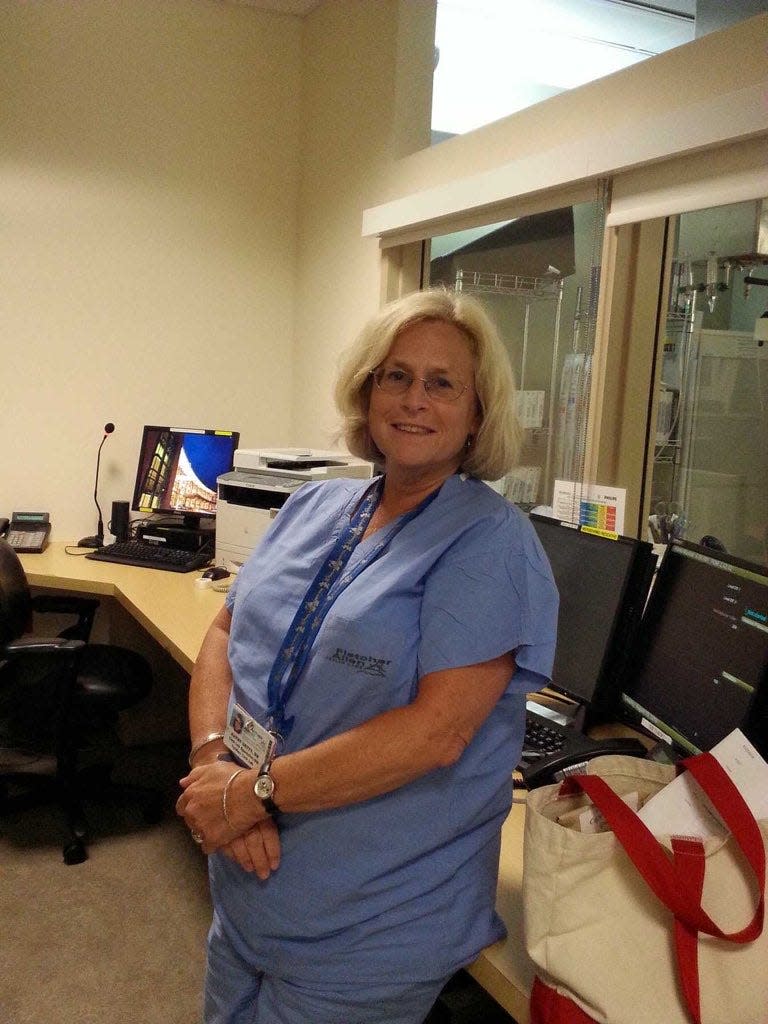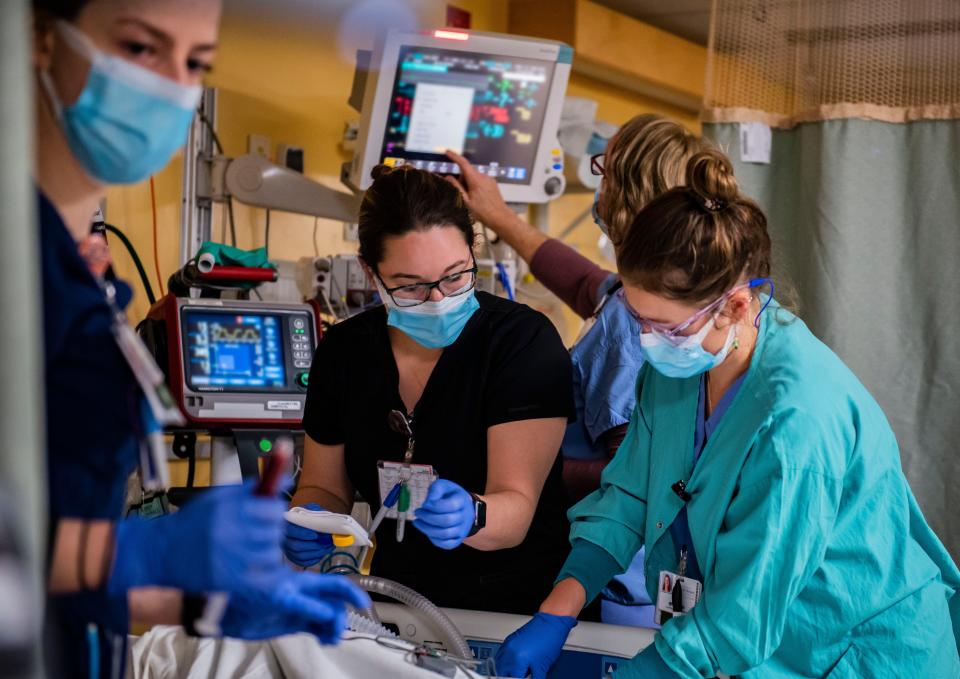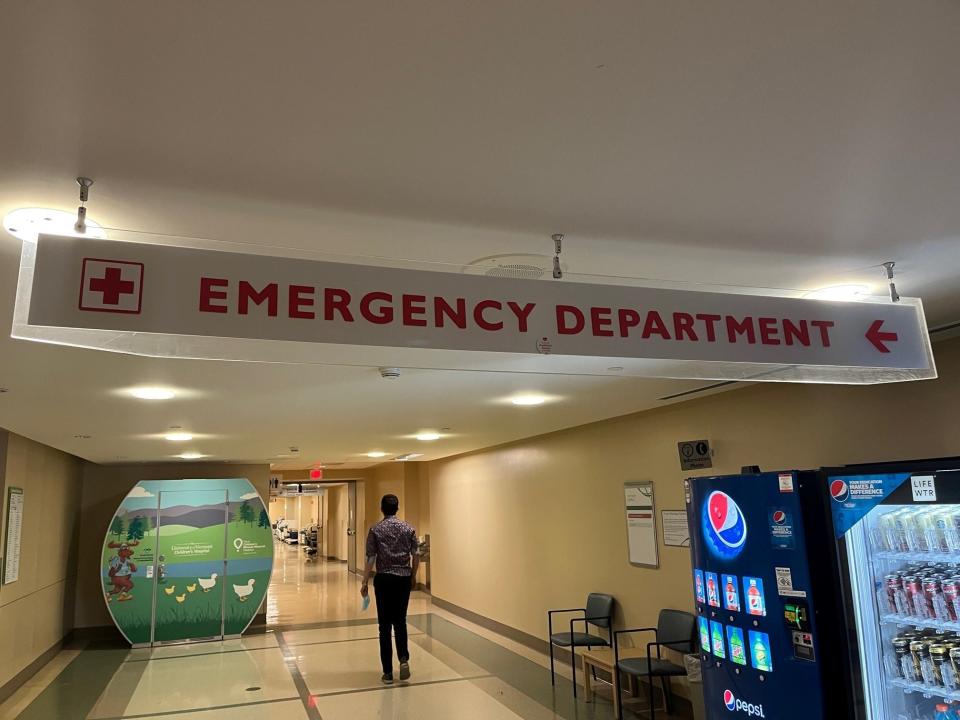When nursing homes are full patients find themselves stuck at UVM Medical Center
When it comes to hospitals, not all beds are created equally, and that's part of the problem for the UVM Medical Center as it tries daily to find the beds it needs for patients.
Dr. Stephen Leffler, president and chief operating officer of the Medical Center, told the Burlington Free Press recently the hospital has seen only a handful of days in the last year and a half when it wasn't backed up with dozens of patients needing beds − designated as "red level."
The Medical Center has 533 beds, with 365 for medical/surgical patients and the intensive care unit,. The other 168 beds are in units such as the Children's Hospital, newborn nursery, NICU (neonatal intensive care unit), labor and delivery, inpatient psychiatry and inpatient rehab. Hospital spokeswoman Annie Mackin said most of those 168 beds don't help alleviate red level days.
"They don't help us with capacity in the sense that we can't put an adult stroke patient in a bed in the newborn nursery," Mackin said.
Leffler points to nursing homes as a big part of the problem. Every day there are many patients who could be discharged to nursing homes or other long-term care facilities − freeing up hospital beds − but they can't be discharged because there are no long-term care beds available.
More nursing home beds needed
"We need to open more nursing home beds," Leffler said. "Vermont only has 14 hospitals and 33 nursing homes so we're all interdependent. A long-stay patient (stuck) in Burlington literally keeps someone from St. Johnsbury from coming here. Every piece of the system depends on each other. If we don't have nursing home beds it keeps people in the hospital."
Every month, the Medical Center is faced with finding beds for about 450 patients being transferred from other hospitals in the state because they need care that's only available in Burlington. One day recently, Leffler said, the number of patients waiting in the Medical Center for a nursing home or other long-term care bed hit 83. That requires the hospital to find other beds for medical and surgical patients.

"That's more than two full floors of patients," he said. "We keep some in the ED (emergency department), sometimes in post-op, or in the back hallways of the ED. Some are in double-occupancy rooms. We figure it out every day as best as we can. This morning, three people at other hospitals in Vermont were waiting to come here. We didn't have a bed. We will get them here over the course of today."
Nursing homes and others face financial challenges of their own
Compounding Leffler's frustration, not all nursing beds technically available in Vermont are open, either because the facilities don't have enough staff, or because they are losing money on every bed they open.
"Most people in nursing homes are Medicaid or Medicare patients," Leffler said. "The challenge for our nursing home colleagues is the rate they're paid per day hasn't kept up. Patients are more complicated and sicker. Staffing costs more."
Nursing homes rely on travel nurses just like the Medical Center does, which drives costs up significantly. Travel nurses are paid more because of the transient nature of their jobs, and because of the critical role they play, filling the gaps left by the nationwide nursing shortage.

In 2022, the Medical Center spent $120 million it hadn't planned on spending, $81 million of which was to pay travel nurses. The hospital ended up losing $39 million that year.
Suzanne Anair, a licensed nursing home administrator in Vermont for more than 16 years, confirmed Leffler's analysis of the dilemma faced by the state's nursing homes in her testimony before the joint hearing of the House committees on health care and human services on Feb. 21.
More: UVM Health Network at risk of $20 million loss in FY24 as financial woes continue
Anair said The Center for Living and Rehabilitation in Brattleboro, where she's an administrator, has not rebounded from the COVID-19 pandemic. When people ask her why not, she tells them staffing.
"There are a lot more opportunities for (licensed practical nurses)," she said. "It's very hard work (in nursing homes). Seven days a week. We have lost nurses. We had a lot of retirements. We've seen nurses go into medical practice positions where they can work Monday through Friday, with no holidays and no weekends."
Travel nurses command significantly more money than nurses on staff
Expenses at CLR are the highest they've ever been, according to Anair, chiefly because of hiring travel nurses to fill the void left by departing staff nurses. Licensed practical nurses on contract can command up to $75 per hour. Registered nurses are paid up to $125 per hour.
"That is significantly higher than our regular staff are paid," Anair said.

At one time, CLR had all 150 of its licensed beds open. Today, there are 130 beds open to save money on staffing.
"I do have a referral and wait list every day of 15 to 20 people," Anair said. "This is something we've never seen before."
Maximum capacity at CLR is about 125 patients because some patients need private rooms.
"We may have patients who are actively passing, and we want to give them privacy and dignity," Anair said. "There are reasons we can't get to 130 (patients)."
Home health care is losing money on federal reimbursements too
Jill Mazza Olson, executive director of VNAs of Vermont, and Sarah King, chief executive officer of VNA & Hospice of the Southwest Region, testified before the House committees on the plight home care agencies are facing. Providing long-term care for patients in their home is considered the most efficient and effective way to provide care, and is preferred by patients, but has challenges.
King said home care agencies like hers are chasing after the same skilled nurses as hospitals and nursing homes.
"We have financial struggles like everyone else," she said. "92% of our revenue comes from Medicare and Medicaid. Medicare is constantly cutting us and will continue to cut us, but we need to remain competitive with our salaries. Again, we're all competing with the same pool of nursing. If we're not competitive they won't come to home care."
VNA & Hospice of the Southwest Region lost $2.3 million last year, according to King, $800,000 less than in 2022 because the agency was able to cut some travel nurses.

More: Could the new support staff union improve the staffing shortage at UVM Medical Center?
"We're all losing money, and it's not sustainable," King said. "We know we are the lowest cost option to the health care system and we want to work with hospitals and nursing homes to keep patients at home, where studies show they do better."
Contact Dan D’Ambrosio at 660-1841 or ddambrosi@gannett.com. Follow him on X @DanDambrosioVT.
This article originally appeared on Burlington Free Press: When Vermont nursing homes are full hospital beds are in short supply

